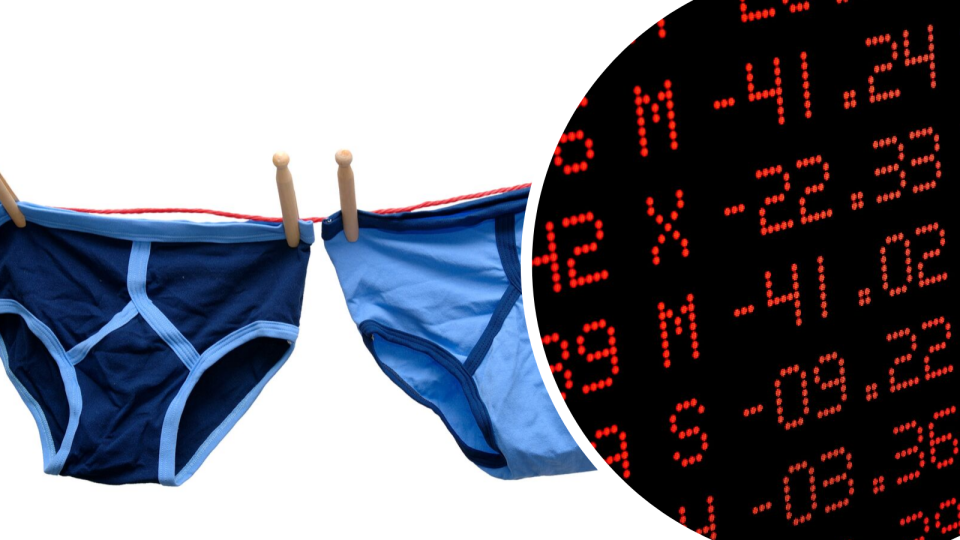The ‘Undies Index’ and 3 other hidden indicators of a recession

Aussie stocks tanked this morning, with every sector losing at least 1.0 per cent, after a second day of significant falls on Wall Street.
The ASX’s losses today totalled around $46 billion as the financial, industrials, healthcare and telecommunications sectors also all fell more than 2.0 per cent.
But it’s not the first bumpy ride the Stock Exchange has experienced, with the ASX suffering a $30 billion write-off in August and a volatile September.
Also read: Has Australia had a hidden recession? Peter Costello thinks so
Also read: Things are looking up – forget the recession scaremongering
And with that comes talk of the ‘R’ word: recession.
Experts often reference an inverted US yield curve as an economic indicator of a recession, and while that does reflect investor sentiment, and therefore whether investors are thinking a recession is on the horizon, there are other hidden, and quirky, indicators people look for.
Skyscraper Index
Investopedia describes the Skyscraper Index as an economic indicator that links the construction of the world’s tallest skyscrapers with an imminent recession.
The theory, which was developed by British economist Andrew Lawrence in 1999, is that there is a positive correlation between the development of mega-tall buildings and financial downturns.
Basically, if countries are funding the development of skyscrapers, their economy can be viewed as one that has expanded so much, the likelihood of a bust in the near future is high.
It’s similar to counting cranes, which is another economic indicator of a recession.
Counting cranes can give us an indication of where we are in the business cycle - less cranes normally indicate a slowing economy, or that we are in a ‘trough’, which means a peak is up ahead.
Men’s Underwear Index
This quirky theory, which was developed by former US Federal Reserve chairman, Alan Greenspan, is that when men’s underwear sales decline, a recession is up ahead.
The assumption behind Greenspan’s 1970s Men’s Underwear Index is that men tend to view underwear as a necessity rather than a luxury, which means that product sales should remain steady, except during severe economic downturns.
Though widely criticised for its inaccuracy, Quartz reported that, since 2009, men’s underwear sales across North America increased by $1.1 billion, actually reinforcing Greenspan’s theory.
Haircut Index
Another quirky economic indicator is the Haircut Index, which was suggested by hair care manufacturer, Paul Mitchell founder John Paul Dejoria.
Dejoria suggested that during good economic times, customers will visit salons for haircuts every six weeks, while in bad times, haircut frequencies drop to every eight weeks.
Divorce Rate Index
After the Global Financial Crisis in 2008, divorce rates shot up for the first time in seven years, according to data published by the Office for National Statistics.
At the time, counselling charity Relate told the Guardian, the figure wasn’t necessarily a surprise, with the recession putting added pressure on couples.
But, the jury is out on this one, with a 2010 study highlighting “mixed evidence” on whether increases in unemployment rate lead to overall increases in the likelihood of divorce.
Make your money work with Yahoo Finance’s daily newsletter. Sign up here and stay on top of the latest money, news and tech news.

 Yahoo Finance
Yahoo Finance